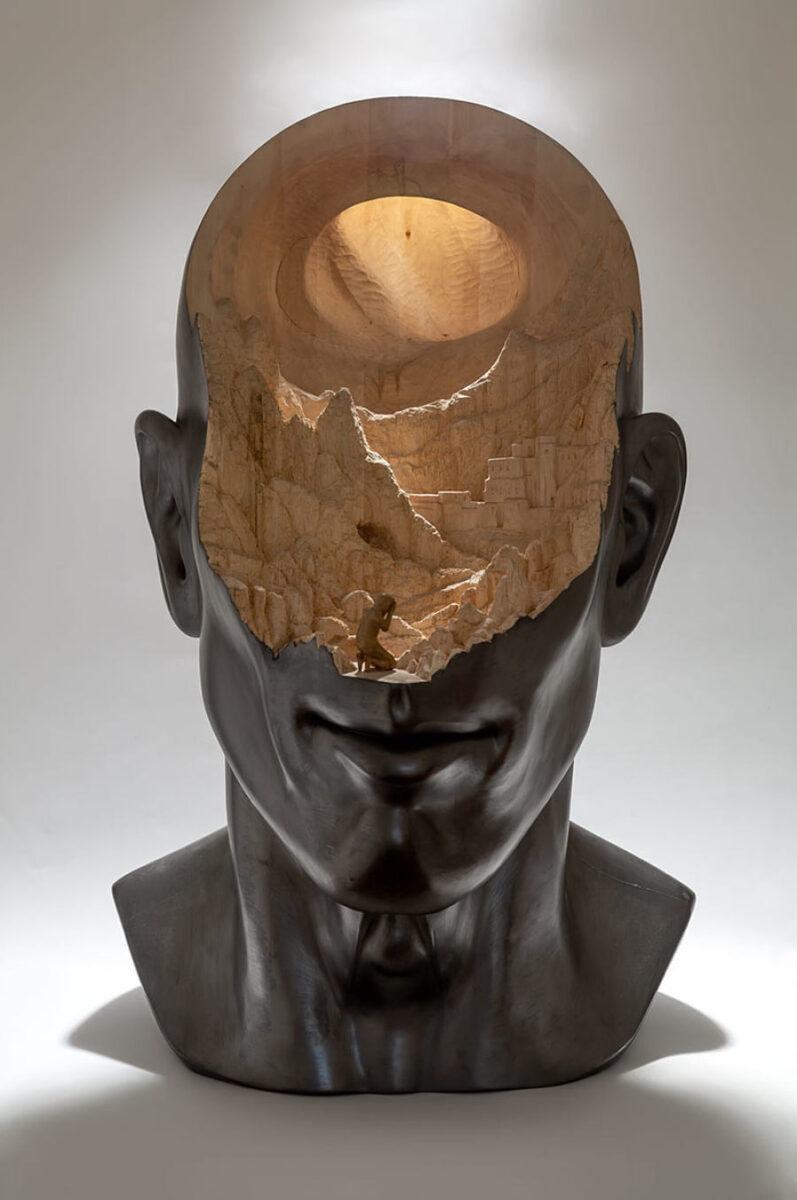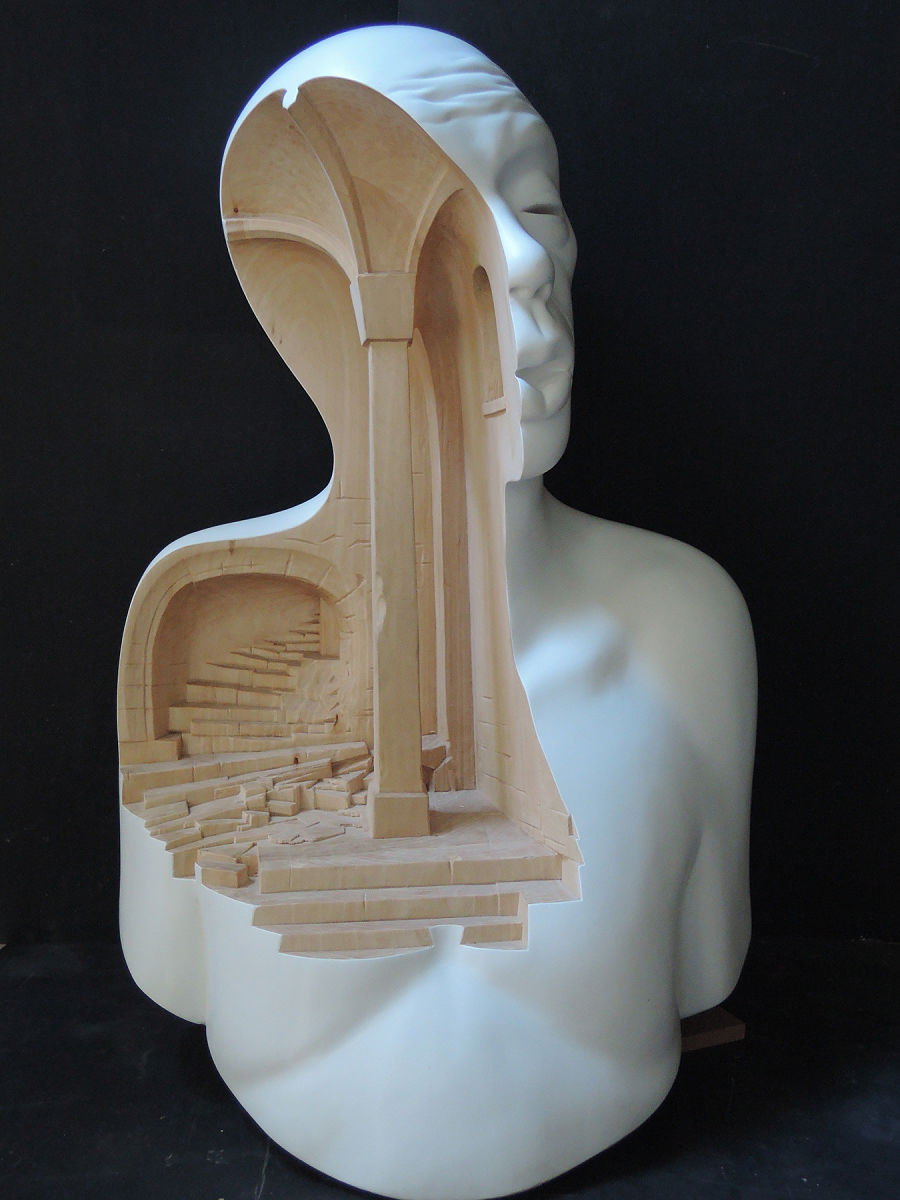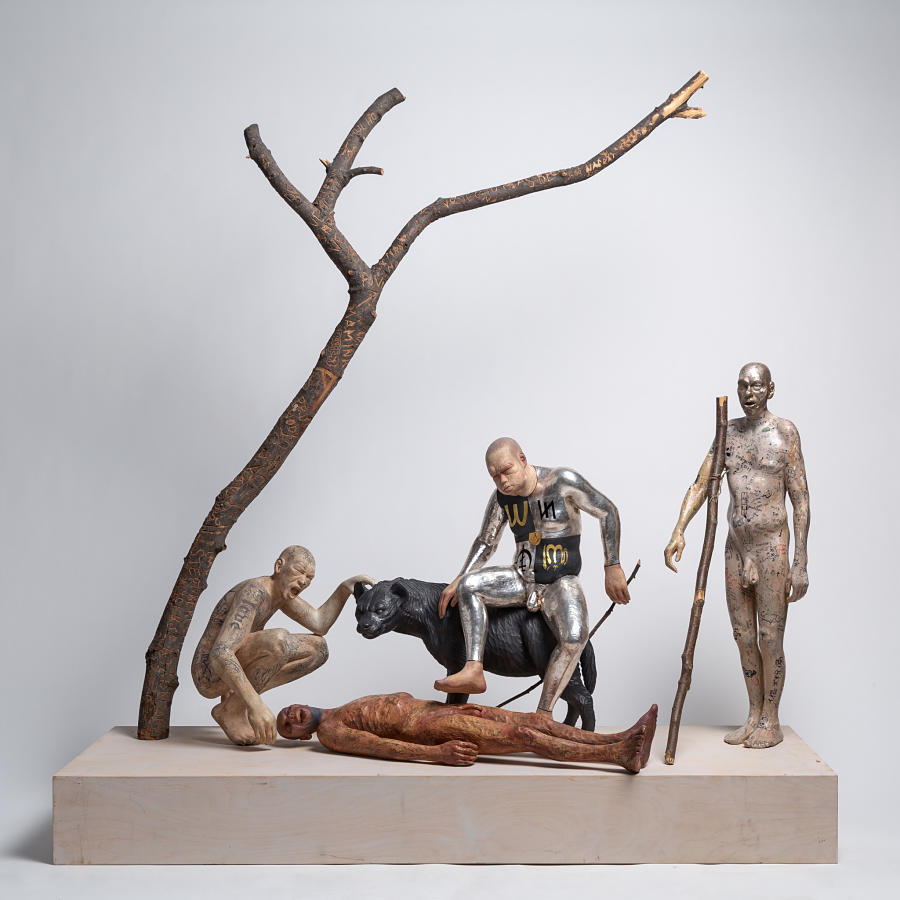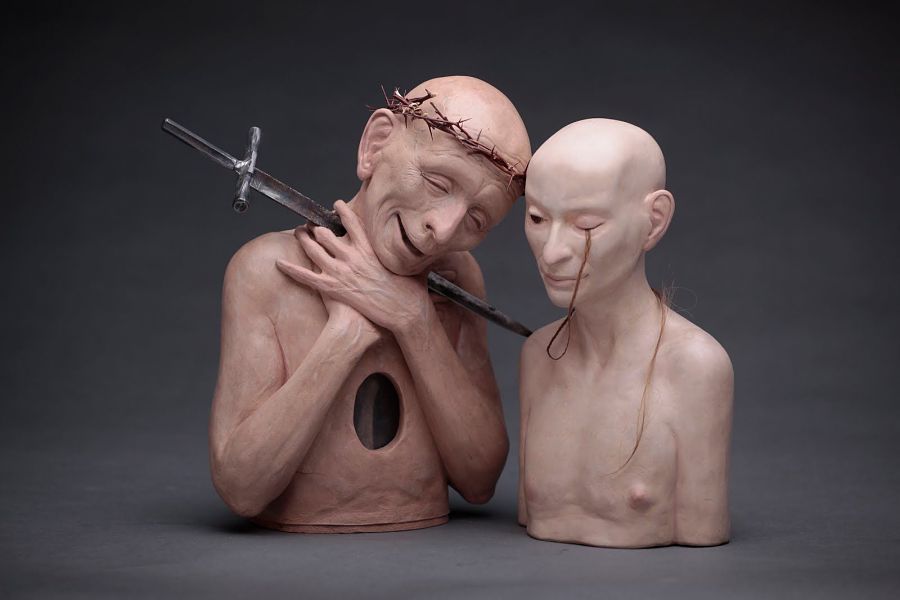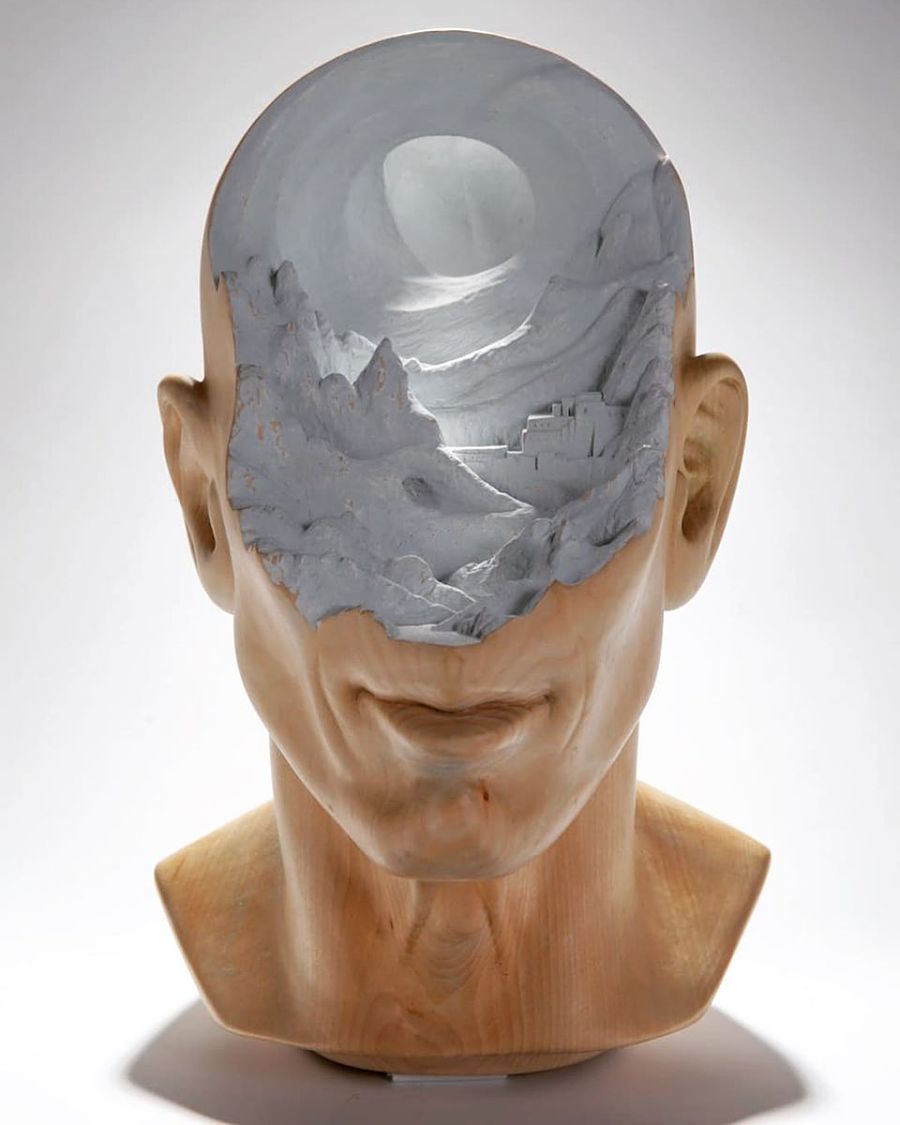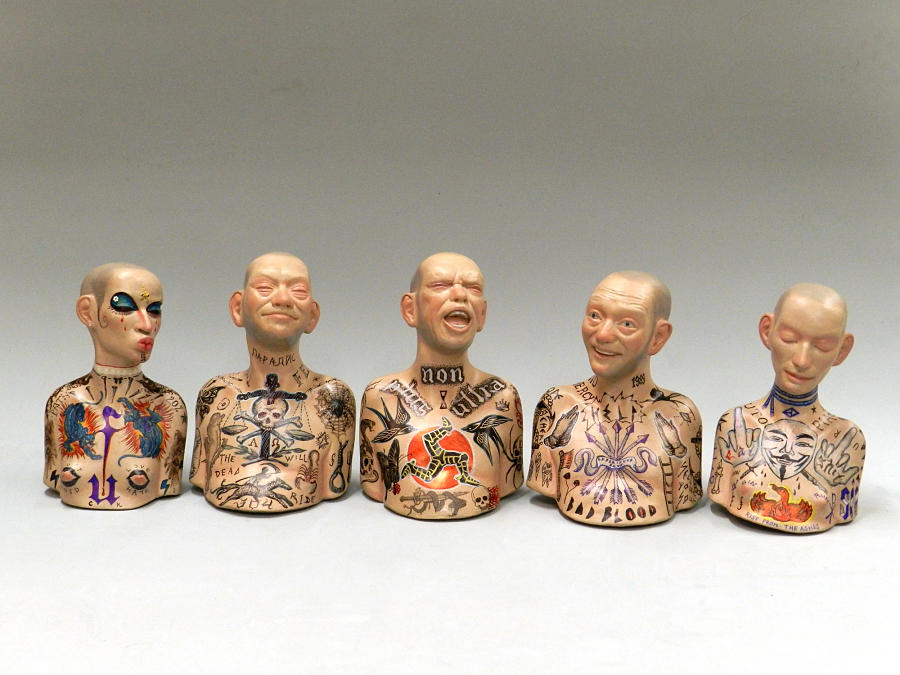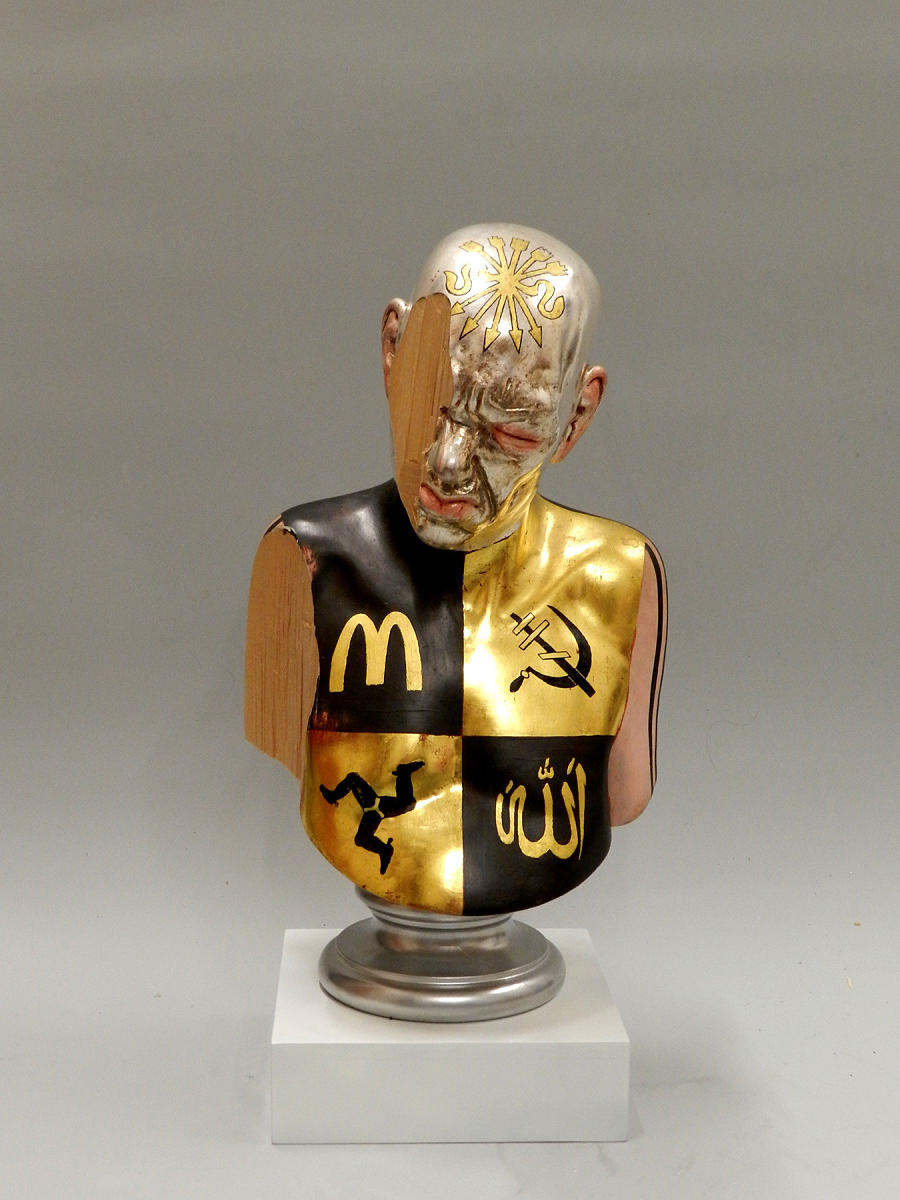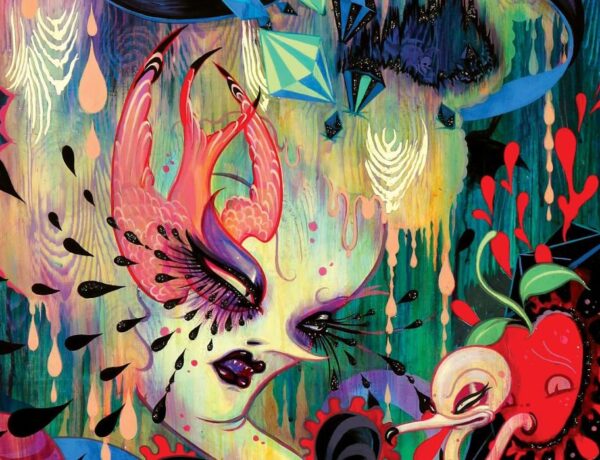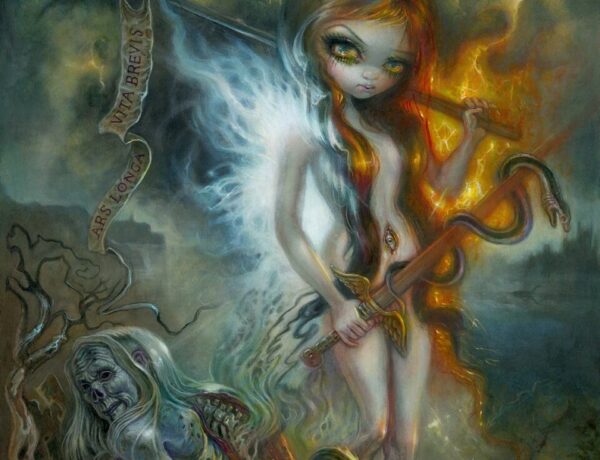Exclusive Interview with Richard Stipl, 2nd Prize Winner, Yasha Young Projects Sculpture Award, 2020 Beautiful Bizarre Art Prize
Most of us have heard the expression of insanity being the repetitive act of something and expecting different results each time. But what if that isn’t really the case? In some ways, it contradicts the adage practice makes perfect. So in order to better understand these philosophical ramblings, look no further than the brilliant and seemingly insane Richard Stipl. The sculptor artist takes his time creating these astounding pieces, all modeled after his own mercurial visage.
Richard Stipl’s entry to the Beautiful Bizarre Art Prize entitled Dream of the Prophet gives a peek at the forbidden peaks of the mind. The intricately carved out landscape tells a story, and perhaps helps explain just how beautiful the mind can be.
Richard’s other sculptures, meticulously sculpted as clones of the artist, reveal much about humanity. The nude figures, a window to vulnerability, are often adorned in corporate logos and tattoos as they express an art within the art. However, it seems that Richard’s focus is less on the outer shell and more into the psyche with sculptures opening up the inner workings of the mind. Even his vastly expressive aspect details the sheer complexity of the human spirit.
Who are some of the artists that have inspired you and what is inspiring about their work? What are some of your favorite pieces from them?
Lately, I have been inspired by a lot of women artists. They have a sensibility that is more fluid and tactile and speaks to me in a beckoning voice. Berlinde de Bruyckere’s rawness, both stunning and overwhelming, stops the viewer in their tracks. Though all of her pieces are great, We Are All Flesh tells it all. Kiki Smith’s work is full of myth and storytelling. The interaction of strong animal symbolism is primal and hits at gut level. I love Juul Kraijer’s drawings. They are so sensual and the deceptive softness pulls you in and locks you in her world. Louise Bourgeois, Paloma Varga Weisz, and Carol Bove are also strong influences.
I am a painter first, a sculptor second.
Who are some of the other artists who have affected your career?
My mentor Evan Penny, I admire greatly for his necessary wisdom during my formative years as a sculptor. His openness about experiences in search of the big questions in life and art have been very helpful. Along with Evan comes the heavy hitter Ron Mueck, who is someone that you cannot get around easily. He is the reason why I gave up on pursuing the hyperrealism game. You just cannot win with this guy; he’s got you beat before you enter the gate. Next is Gehard Demetz; I keep my eye on [him] at all times. His prowess as a wood sculptor is unmatched and keeps you on your toes. He is the best of them. As an all-around talented artist, with unmistakable and unmatched powerhouse-wow-effect, Nicola Samori gets me every time. His strength in both painting and sculpture is something not to be ignored or taken lightly.
The biggest inspiration for me is the wood carved sculpture of the late gothic and early Renaissance. They are represented best by sculptors such as Tilman Riemenschneider and Veit Stoss. The inspiration for my early sculpted work is the renowned Franz Xavier Messerschmidt and his expression of emotion.
What are the steps you took to becoming a sculptor?
I am a painter first, a sculptor second. I studied painting at the OCADU in Toronto Canada in the 90’s in a post modern environment. Ideas and theory were foremost whereas technical skills were viewed as secondary. Content took precedent over form.
You utilize other fine art skills such as painting on your pieces. Why did you choose this medium as opposed to two-dimensional art?
During my schooling, I studied figurative and representational painting. Looking back, I cannot say what made me want to study painting as opposed to sculpture. By the time I presented my graduation show, sculpture and the third dimension had emerged alongside my painting in an ever more crucial role. This led to other experiments in installation and object works down the road and seemed to always be tugging at my sleeve. At times, I caught myself unable to turn away my jealous gaze when confronted with an amazing piece of sculpture from other artists.
After 10 years of painting, I gave it up. It wasn’t getting me to where I wanted to be as far as exposure and the attention I had imagined. The relationship had grown stale and I was bored. Once I made the switch to clay sculpture, using myself as a model, I was totally immersed. I am, however, grateful for knowing how to paint since it brings a different dimension to sculpture and plays an important role in composition and surface finish.
No work is complete until it is tossed into the sand dunes of art history and becomes a palimpsest of visual vocabulary.
What were you doing before you became an artist? Did you attend an art school?
Becoming an artist was a natural development since childhood. There was no doubt in my mind that this is what I wanted to do. This ties in to the previous question and my development in art school in Toronto.
What sort of things keep you occupied when you aren’t working on art?
I have a family now and raising a daughter is no easy task for two working parents. I will be turning 53 this spring so between making art and raising a family, there doesn’t seem to be much time for anything else. When I do get a chance, I love to get out in the woods as a source of inspiration and wonder. At the moment, I am obsessed by the Spanish Baroque polychromed sculpture and am reading and all the books I can get my hands on.
Where do you find inspiration for your work?
Like many artists throughout the millennia, I am fascinated by the human body. The sculpting process starts with the self; my body and those close to me. It is neither a self-portrait nor a negation of the self, rather a prototype, an any-body. Once a body exists in a time and space, it can set out on a journey, adapt a narrative, and gather associations moving between blunt symbolism and raw emotion. Most of all, they surprise me while they mature into compelling visual experiences, which can in some cases take several decades. Some pieces wait patiently to be shaped into visual poems; dreams weave into layered meanings of symbols, myths and narratives of human experience.
Recently, I incorporated an obsession into my work with collecting objects and items that embody memories or records of the past. I transform and fuse them into new contexts. By introducing small amateur wood carvings alongside my sculptures, there occurs a magical moment that propels an automatic narrative into uncharted territory and unforeseeable situations. As such, some sculptures are easy to talk about while others change their ephemeral meaning over time. The best ones insist that their meaning is perfectly clear without further commentary.
Why do you choose to portray your figures in the nude?
Why the nudity? Most of the figures stem from self portraits. I feel the freedom to strip away all pretenses and expose myself to the viewer and present emotion and vulnerability. No work is complete until it is tossed into the sand dunes of art history and becomes a palimpsest of visual vocabulary. Art is informed by medieval carving and folk art, leftovers of the past century, silent films, iconography, the personal and the social history, architecture, collective conversation, and the psycho biographical vortex.
Some of my work takes a long time to emerge as a finished piece. They get dragged from studio to studio and lie around for years before they come to a point of completion. Sometimes, by accident or by chance, something clicks and a new meaning emerges, like actors on a stage cast in different roles.
What are your favorite mediums to use and why? Are there any that prove more challenging than others?
My process is strictly defined by the medium. All my sculptures start out in clay. This carries a deeper symbolic meaning when we consider that clay is the dust of the earth mixed with water. Some of the difficult poses I sculpt from photographs but those are somewhat limiting. After a mold is made its cast in bronze or carved from wood. Later, the pieces are painted and sometimes tattooed. Some of my work takes a long time to emerge as a finished piece. They get dragged from studio to studio and lie around for years before they come to a point of completion. Sometimes, by accident or by chance, something clicks and a new meaning emerges, like actors on a stage cast in different roles.
Do you have any plans to take up any other mediums?
I am definitely going to take a stab at marble at some point. I am more or less waiting for the right project to work on using this medium.
How do you see your art fitting into the world as it is currently?
Each era carries with it a certain sensibility that is inseparable from the art that comes into existence at that time as in con-temporary or with-time. That being said, my work has undergone its own developments over the years. My first impulse was to copy nature and to get as close to realism as possible. I wanted to understand anatomy, form, and how the body works. That is why my work appeared along side the great sculptors Evan Penny and Ron Mueck in the Spanish magazine LAPIZ in June 2006. However, once my work was thrown in with other hyper-realists, I realized how limiting and blinding this genre is. My work is more than just being hyper real, and if I veered off course I would be dismissed. So that was a path I chose not to follow.
Is there a direction you want your art to take in the future?
At some point while working on a multi figure composition my sculptures acquired a life of their own. They explored some really dark places in my own psyche. I had developed a concept of surrogate brothers to help me cope with my blind spots and big ifs in my personal history. In the seminal piece Block Sabbath, this idea is fully developed into a final phase and I assumed the role of a director whose production has gone horribly wrong. The full figures are devoid of any inhibitions and set upon themselves with open ferocity and gusto. They obsessively plunge into ritual ceremony of auto cannibalization, self-ridicule, incantation and targeted self-destruction. Through this orgy of primitive cruelty and human folly, they hope for some kind of a catharsis to elevate themselves from this vicious circle, absolved from their own past. For me, it was another faze and once I could stand back and observe it objectively, I rejected this path as too self obsessed.
Eventually, I emerged with a vision of creating a unique style of my own that could be expressive but without the brutality. Lately, it has become more completive, almost spiritual, and is likely to stay on this course for some time.
… clay is the dust of the earth mixed with water.
Why did you enter the Beautiful Bizarre Magazine Art Prize?
A few weeks before the deadline for the Beautiful Bizarre Art Prize, Yasha Young posted one of my sculptures on her Instagram feed. I took that as a sign to try it out. I have never entered a competition and generally don’t apply for grants and competitions. But I thought what the hell, let`s do something different for a change. So with that in mind, I sent in my application.
What do you feel you have gained from this experience?
It has been an eye opener to all the different disciplines out there and the amount of quality work that gets produced. It was great to compete on a global scale and to come in second. I was quite shocked actually. I wasn’t expecting anything. The exposure has also been terrific. I am very grateful to BBM and all those on the team and the committees. It is quite a major undertaking to organize something like this on a international level. Respect.
Would you recommend it and encourage others to enter? If so, why?
I encourage anyone who is creative to enter; it sharpens up your game, forces you to define your position and you get to be a part of something that is bigger than you and the bubble you live in.


